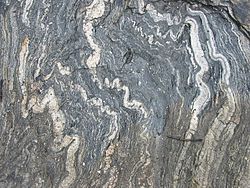Engineering edition. Engineering is the process of
design. We design tons of things for many reasons, and incorporate many
different disciplines in the process. It’s great in the classroom because it
doesn’t require feedback from the teacher – the students test their design, and
learn from evidence they observe, not from the teacher. Then they make
changes to see if they can make it more successful. (This is called
“iterative” design, which means repeating.) Engineering is coming in the new science
standards, and this week, I’ll give you an idea for a simple engineering
project for your grade level that supports your current science standard.
Make it easy, and do a quick 20 minute lesson on it, or take it into a weeklong
exploration. Either way, I promise your kids will learn a lot about the
standard at hand.
Kindergarten Engineering – We’re just starting to look at
night/day and the effects of the sun’s heat on the planet. Take a look at
this engineering challenge – it examines the effect of color on the melting of
an ice cube: https://www.teachengineering.org/view_activity.php?url=collection/wpi_/activities/wpi_colors_absorb_heat_better/colors_absorb_heat_better.xml
I have a heat lamp if you want to borrow one – not a lot of
sun forecast for the next two weeks. Here’s my spin that makes that more
of an engineering challenge: You have one piece of paper. You can cut,
tape, glue, whatever. How can you use your piece of paper to keep your
ice cube from melting the longest? Or melt the quickest? That would
be interesting up through 6th grade, actually.
First Grade – Here’s an indicator: “Analyze the individual similarities and differences within
and across larger groups.” Look at your class as a “population” or “larger
group.” Choose a characteristic that varies across that population, like
shoe size. Have the kids design something that would work for “most” 1st
graders, like an adjustable roller skate. In doing so, they’ll have to
take a critical look at how that characteristic varies across that population,
how it’s the same, and how it’s different. Less likely that you’ll be
able to test this one, but it’s the best idea I had!
Second Grade Engineering – From the core: “Sort rocks based upon color, hardness,
texture, layering, particle size and type (i.e. igneous, metamorphic,
sedimentary).” Have the kids design a way to sort rocks. We can go
by any characteristic they notice. The key here is we’re trying to get
them to notice the different things have in common, and what makes they
different. Designing systems is certainly a form of engineering!
Does their system help us tell rocks apart? Can another student use
that system and get similar results when sorting the same group of rocks?
Third Grade Engineering – Simple machines lend themselves so
easily to engineering. Here’s your indicator: “Investigate how forces applied through simple machines affect
the direction and/or amount of resulting force.” Have the kids design a way to
use at least two simple machines to move something moderately heavy (like a
handcover book) 1m sideways and 1m up or down inside your classroom.
Fourth Grade Engineering – “Describe the water cycle.” So many things would work
great here. Design a solution to maximize or minimize evaporation, or
condensation. Actually build them, and test them. Design a way to collect
rainwater. How about a way to filter water. For more advanced
students, engineer a model that shows all three phase changes of water, or all
the various “ation” words within the water cycle. Go nuts.
Fifth Grade Engineering – To cap off changes in matter, have
them engineer a way to prove conservation of matter in any of the following
situations: vinegar and baking soda reacting in a soda bottle, melting a
snowball, burning a birthday candle, or growing a plant. They could
actually build these things (no flames in class) or draw their designs.
This would require more teacher input, but they will come away with an
incredibly deep understanding of the process. Especially the plant
one. Bonus points for any teacher who can figure that one out.
Sixth Grade Engineering – To finish up with the moon, have
the students engineer a way to track the moon’s motion across the sky through
one day. “Compare how
objects in the sky (the moon, planets, stars) change in relative position over
the course of the day or night.” My solution was the soda straw modeling
clay thing, I’d love to see what your students can come up with. A
stonehenge? Marks on a window? You’ll be surprised how deeply this
problem makes them think about the motion of the moon. Test those
designs! See if they actually work.
Enjoy, and see me with any questions or for clarification!




